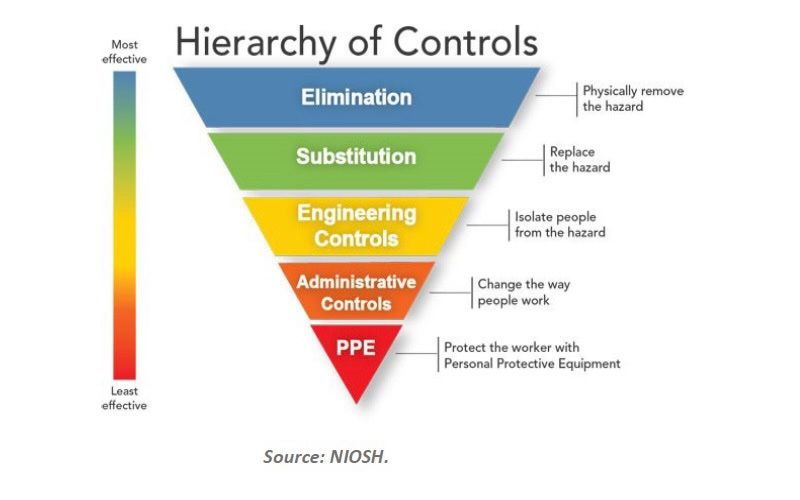In the world of large diameter, low speed fans, comfort and energy efficiency are synonymous with air movement. It might not be the first thing facility managers think of when providing comfort for their employees, but air movement provides a year-round solution to summer cooling and winter heating, which in turn increases morale and contributes to employee safety.
In the world of large diameter, low speed fans, comfort and energy efficiency are synonymous with air movement. It might not be the first thing facility managers think of when providing comfort for their employees, but air movement provides a year-round solution to summer cooling and winter heating, which in turn increases morale and contributes to employee safety. Unsafe behaviors and, consequently, more accidents occur when the working environment is too warm or too cold.
Large diameter, low speed fans are effective in warehouse and manufacturing facilities, providing proper air circulation in conditioned or non-conditioned spaces regardless of the season. A June 2009 ASHRAE Journal article stated that many facility managers measure energy use but few measure comfort. “Part of the problem,” said the author, “is that energy costs are visible and easy to measure, while comfort is difficult to measure.”
The high ceilings and metal construction of most warehouses are not designed for traditional HVAC systems. “In larger, open spaces where a person moves around, it’s hard to maintain comfort without proper air flow,” said Christian Taber, applications engineer for Big Ass Fans, Lexington, KY. “Large diameter, low speed ceiling fans can ensure adequate air movement throughout a facility, providing an effective, energy-efficient solution to employee comfort.”
Heat rises
In winter, many facilities have the same problem: machine-generated heat or warm air from heat distribution systems rises to the ceiling, stratifying the air before escaping through the roof. With stratification, the air settles into layers of different temperatures, with the warmest air at the highest point.
The temperature at the ceiling can be 7 F to 10 F higher than the temperature at the floor, leaving a negative impact on the energy usage and indoor air quality. Employees are left to work in uncomfortably cold conditions.
The key to the effectiveness of 6-foot to 24-foot large diameter, low speed fans is their ability to move huge volumes of air while providing quiet, gentle, non-disruptive air movement. The fans are energy efficient because they use small motors to generate large volumes of air. During the winter, the fans are slowed to circulate warm air collecting at the ceiling down to the occupant level. According to the National Institute of Standards and Technology, energy savings of at least 3% can be achieved for each degree the thermostat is lowered during the heating season or raised during the cooling season. By adjusting the thermostat a few degrees, users can save up to 24% annually on energy.
Heat falls
Summer brings its own set of challenges as hot, stale air can severely impact employee morale and worker safety. ASHRAE Standard 55-2004, Thermal Environmental Conditions for Human Occupancy, indicates air movement can be used to efficiently cool people indoors as a way to improve comfort. Some relevant variables taken into consideration when determining comfort include air temperature, air speed, humidity, metabolic rate and clothing insulation. Whereas metabolic rate and clothing choices cannot be controlled inside a facility, the remaining elements can.
“The elevated air speed provided by a large diameter, low speed fan produces a cooling effect that lowers the perceived temperature,” said Taber. ”Depending on the distance from the fan, the speed of the fan and the fan’s mounted height, occupants can experience as much as a 15 F cooling effect from the breeze generated by the fan.”
A large part of the cooling effect of fans comes from evaporative cooling. The breeze created by these unique fans helps create a “feeling of coolness” by evaporating moisture from the skin. The more you perspire, the cooler you feel. By speeding up the evaporation process, people feel more comfortable. Large diameter, low speed fans may be the answer to air movement issues in your facility and they can increase comfort and energy efficiency by providing a year-round solution to summer cooling and winter heating.
Large diameter, low speed fans can increase comfort and energy efficiency by providing a year-round solution to air movement issues in your facility.
| Author Information |
| Nina Wolgelenter is a writer for Big Ass Fans. |



